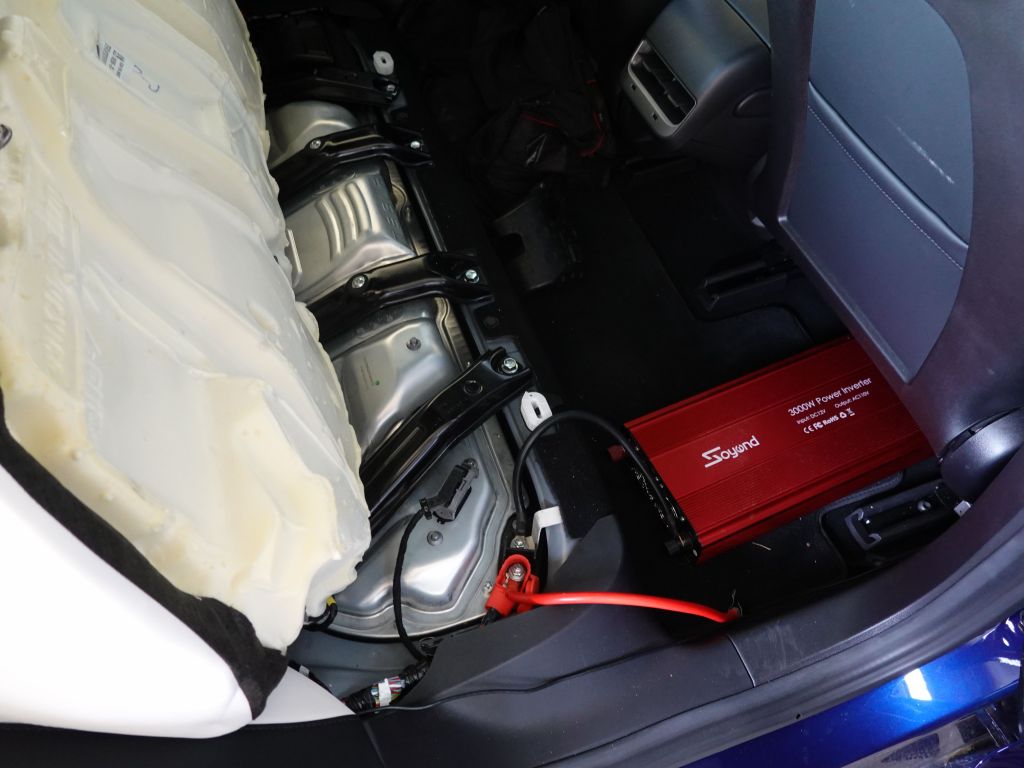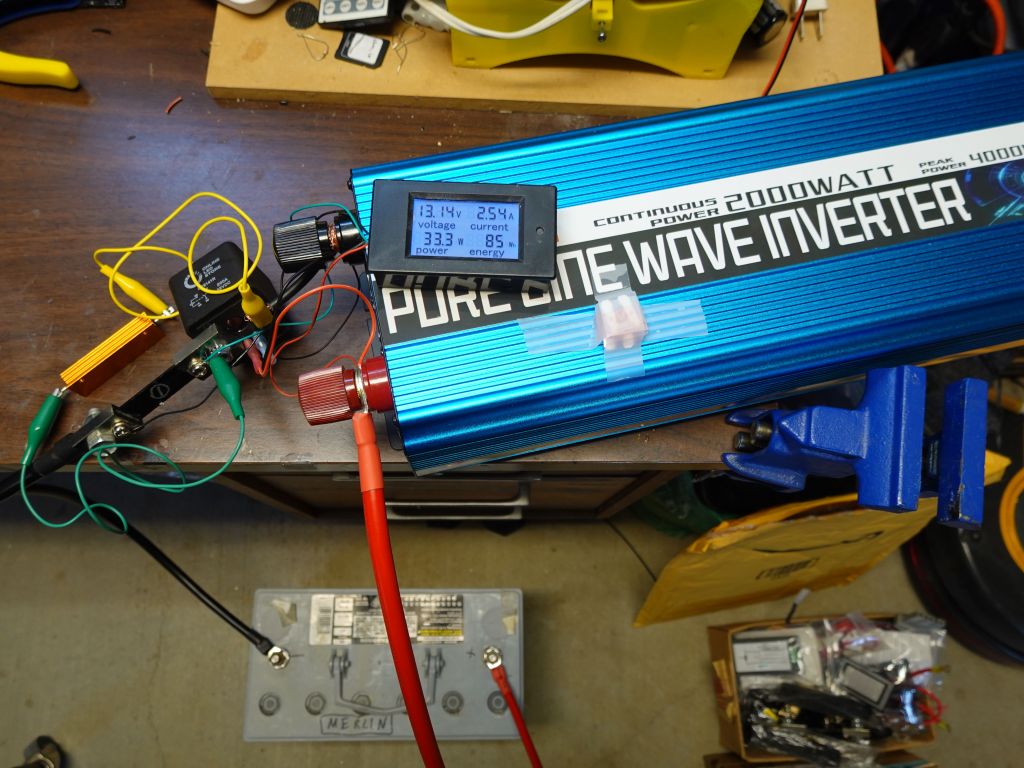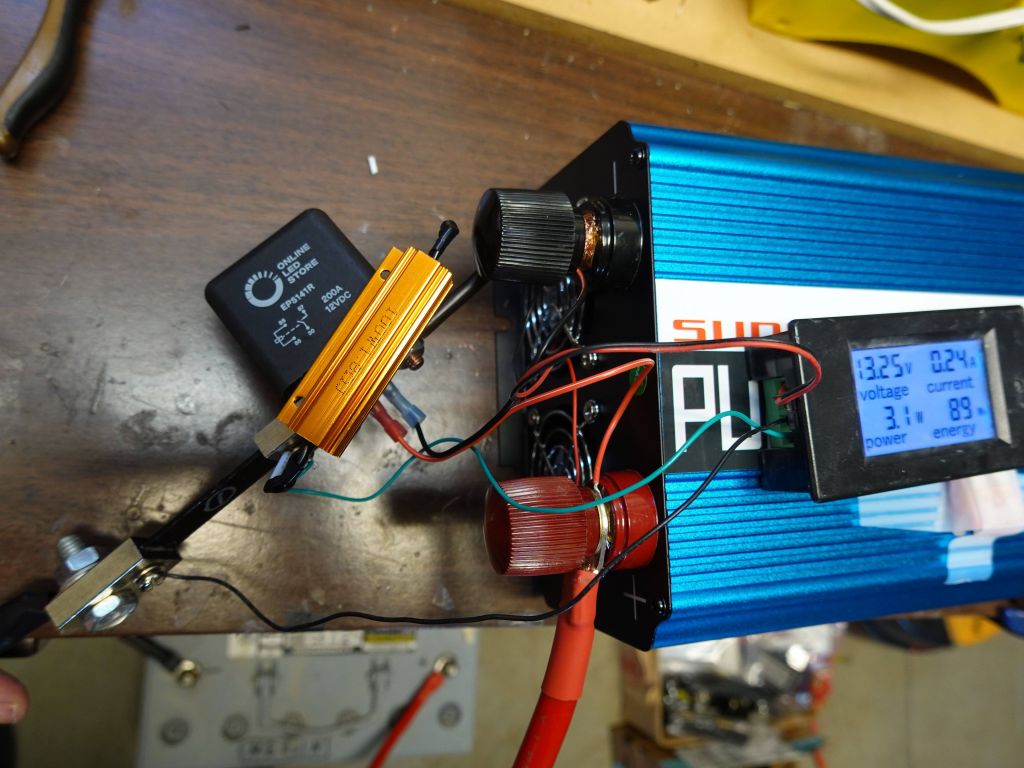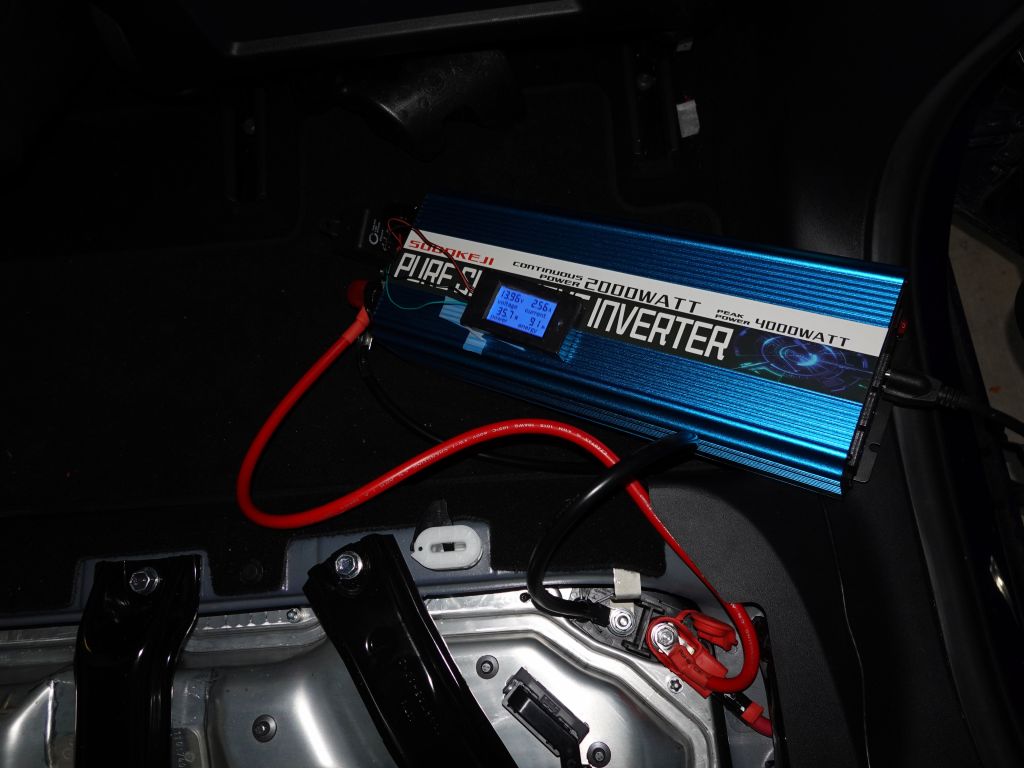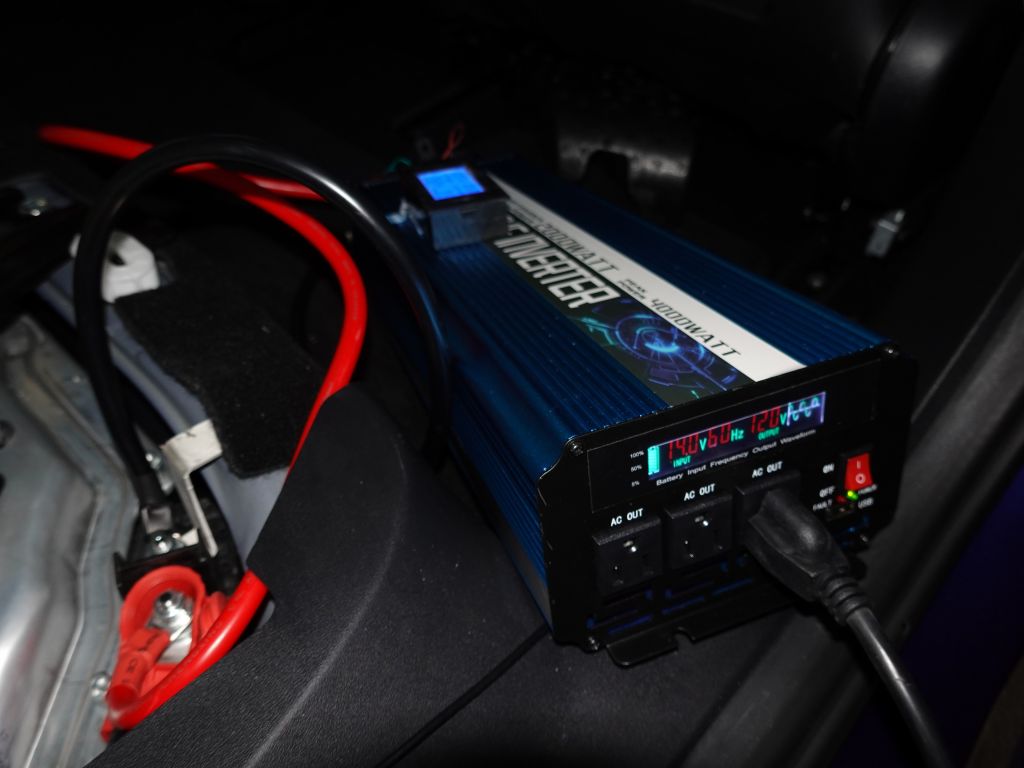I knew that this could void the warranty on some parts of the car. I was ok with that. Tesla wants me to buy a powerwall, but I think powerwalls are stupid.
I'd need to spend $30 to $40K in powerwalls to get the same amount of energy I already have in my car and I already paid for. Sorry, but I'm not spending that much for something I may need once every few years. Load shifting my solar in california is otherwise a straight loss, and PG&E forces some silly rules about not allow using powerwalls for time of use power arbitration if you accept the buying credit for them. You get penalized for helping take the peaks off the grid, yeah bureaucracy!
If tesla sold a powerwall that would allow using your car as a battery source for emergencies only (car batteries are not designed for daily cycling like powerwalls), I'd be super interested, but they do not, so I decided to make my own answer.
I knew that I could probably only get 2-3000W out of my car, honestly for emergency use (a couple of fridges and essential equipment), that's good enough. Sure, it wouldn't power all my house lights, or even my furnace for heating (which happens to use over 1000W just to run the fans), but eh, it's for emergency use only, so good enough.
Plugging into the standby 12V battery
What I knew from the beginning is that the battery in the car is way too small to power a proper size inverter (I have a 3000W one to be safe but honestly I only plan on using 1000W peak for my fridge and an average of 200W otherwise when the fridge is on). What I didn't know is that the Model 3 only provides trickle charge power to the battery, enough to charge it for normal use in the car, but not enough to recharge it if you plug a reasonable inverter into it (it will discharge quicker than it can recharge).My plan was to connect a big GLA 12V battery in parallel with the car's battery, so that it could absorb big peaks and buffer a it longer in case the car's battery recharge didn't kick in quickly enough. I did however confirm that the car's DC-DC system only recharges the standby battery at a slow rate, so it was not adequate for my need.
Plugging into the cigarette lighter adapter
For some uses, it would work to use some DC-DC charging system to recharge a big 12V battery external to the car and try to keep the car awake as much as possible so that the 12V CLA port stays on. The only issue with that plan is that you can only get about 12A sustained from it, so if you are planning on using over 100W average, this will not work in the end. In my case, my fridge was more in the 200W range.
Tapping into the car's DC-DC system
This is where things get interesting. The car's battery pack is in the 400V range, and 400V DC will definitely kill you (DC is actually worse than AC), so don't even think about messing with that unless you are truly a trained professional.For the rest of us, what you need to know is that the car has a DC-DC converter that turns 400V into 14V DC. This is used to power the car's systems when it's not sleeping, as well as recharge the small 12V battery that keeps things alive when the car is asleep. The idea is to tap directly into that 12V system which I'm told can provide up to 200A/2000W (which converted to 120V is really only 20A). A few things to note:
The 2 white holes are where the clips that you need to release. are located. You can also see the black and red tap points:
The Nut on top of the positive bolt under the seat
You could unscrew the existing nut and put your wire there, but it's better not to disconnect the car's 12V power, but there is enough space to put your wire and a 2nd nut on top. You need to get an M8x1.25 (thanks Zack for measuring this).
Building it up without resistor and protection relay
Some inverters are actually polite and do not grab 200A+ as soon as you connect the wire. If you have a spare battery, see if the inverter creates a spark when you connect it the first time. If it does, it's bad news and will want to slow down the current with a resistor, and which is tricky (see below). It could be 1 Ohm, or 100 Ohms, really depends on the inverter.If you do not see a spark, you may just be able to connect the inverter dirctly to your car with just wires (although if that doesn't work, it will trip the DC-DC converter in the car, and require a full car reset to bring it back online).
Building it up
If you do have a spark when connected to a battery, you'll have to play trial and error with resistors. If the resistor is too big, too much voltage will drop, you'll never get 12V across the inverter and the relay will never activate (which is what you seem to have). If the resistor is too low, too many amps will flow and the DC-DC may trip, requiring the full reset trip. I used this:Originally I tried those:
What happens is:
This shows the current meter shunt connected to the bypass relay (which is powered by the connectors on the inverter side). You then see the thick 100W resistor connected in parallel with the relay. This allows current to flow more slowly and ramp up the connection:
I tested a 1300W microwave which worked without issues, so did my fridge and other devices. The pure sine wave inverter is very important for a microwave, but a cheaper inverter worked well enough for my fridge and basic loads.
Since we're talking about currents of 100A or more, we need to talk about wire gauge. The inverter I got came with 10AWG cables of about 1m. These cables are insufficient for 100A (never mind 200A), but in real life will mostly work for short distances and as long as you don't use the full power continuously (which could technically heat up the cable enough to melt its insulation and cause a short eventually). In my tests with 100A, I lost 0.7V due to inadequate wiring:
Given that the car outputs 13.5 to 14V, this drop is not big enough to matter since the inverter works all the way down to 10V or so, but be mindful of potential heat. Here is the end result:
Ok, you're thinking this is too complicated for you, fair enough, then see the simpler answer at the end of the page.
Keeping the DC-DC system awake
One thing that you still need, it to keep the car from going to sleep if you want the DC-DC converter to stay on. Thankfully a recent software update added camper mode. You can just go in the climate screen/fan icon, set the car in park, and set 'keep climate on' to 'Camp', turn off AC and set the temperature to something low in order to save batteries (i.e. not waste the batteries into climate control).Another way to keep the car awake is to turn on sentry mode. I think the newer software has sentry mode that uses parking sensors only instead of cameras and computers to analyse frames (if you have parking sensors, not all cars do). I recommend you play with different modes and see if one works for you with minimal battery use
If you know of a more battery efficient way to keep the DC-DC system on without having to run climate or even having the control screens on, let me know (contact Email link at the bottom of this page). Hell, if you build one and get it working, shoot me an Email too :)
Backfeeding your house
If you really know what you're doing, you could use this with a custom made male-male outlet, to backfeed one or both phases of your house (it won't power anything 240V of course). The advantage is that you don't have to run extension cords and power existing lights in your house. If you do this, you must carefully disconnect utility power so that you don't backfeed the grid, as well as potential solar panels that could decide to sync with your inverter and feed more power than you're using, causing other issues you don't want to deal with. Of course, you'll find that 1000-3000W may not be enough power unless you do careful load sheddingI'm not going to give more details because there is definite potential for things going wrong in many ways, but if you absolutely know what you're doing, there you go...
Discussion Threads
https://teslamotorsclub.com/tmc/threads/how-many-amps-can-you-get-from-the-12v-system-for-emergency-situations.178079/page-3#post-4371607 https://teslamotorsclub.com/tmc/threads/aftermarket-sub-woofer-amplifier-installation-using-dc-dc-12v-power-source.149582/page-2#post-4337510 https://teslamotorsclub.com/tmc/threads/master-thread-powering-house-or-other-things-with-model-3-12v-battery.140567/page-4#post-4371639Update 2025, V2L solutions
So all this time, we all said "why can't you just get power from the charging port, tricking the car into thinking it's charging, and then stealing energy from the 400V battery pack"?The answer is you can, but it's a bit tricky since you need to talk to the car computer to enable the port, and the computer could figure out that the battery is discharging and shut down the connection. There are a few options that seem to work right now, but they are expensive, and any tesla software update could make them stop working. My solution is more cumbersome, and really meant for occasional use, but Tesla cannot turn that off.
Here's a few to pick from:
V2L is too expensive and could stop working, and the relay+resistor solution is too hard and makes me nervous, give me a simpler solution
For occasional emergency use, you can simply use a 12V battery, plug it to the inverter turned off, make the spark on that battery, charge up the inverter capacitor (this is instant, maybe 1 second), and then you can safely reconnect it to your tesla without risk of spark (as long as inverter is turned off and not discharging). This answer is clearly meant for something you'd do manually and rarely when your house power is down for an extended amount of time.Also note that if you let your car go to sleep, the DC-DC will shut down, the inverter capacitor will get emptied and when DC-DC comes back on, you will get the inrush again, which will likely disable your DC-DC and require the reboot procedure, so if you do this manually it is on you to keep your car awake the whole time (camp mode, or sentry, or whatnot).
